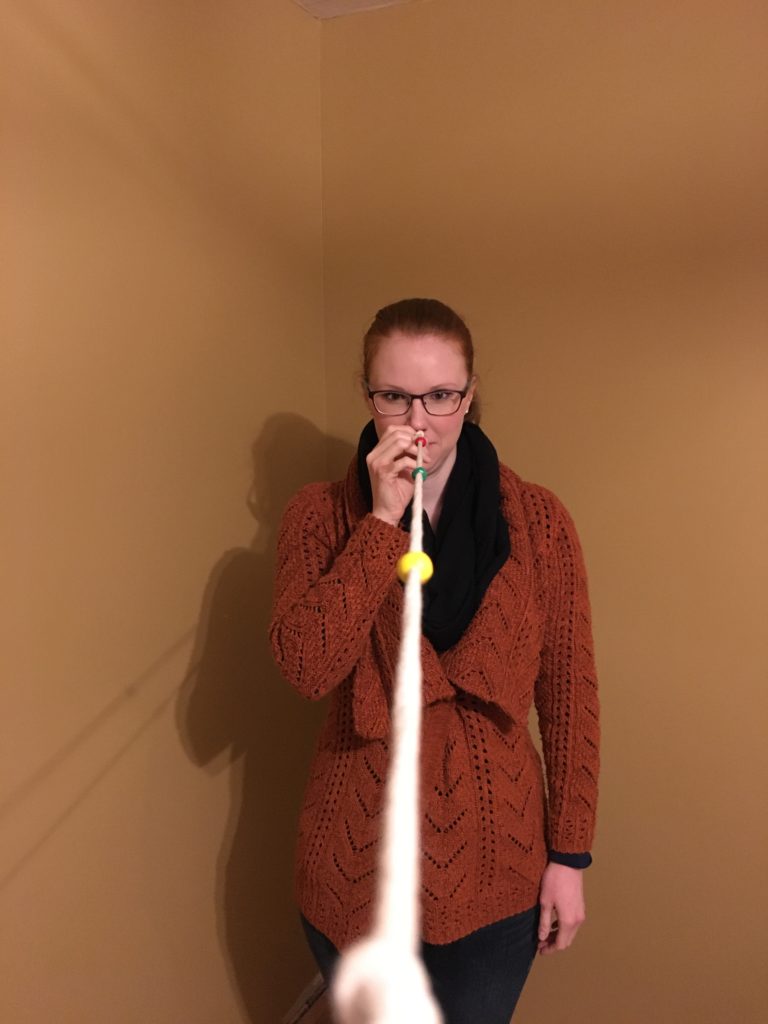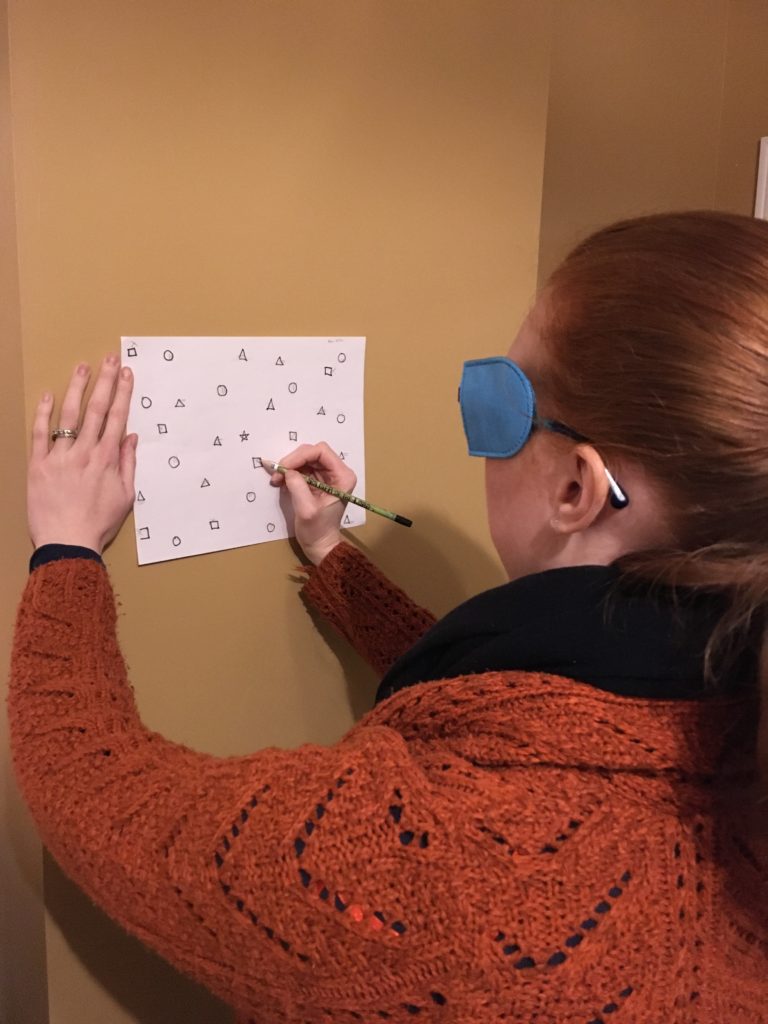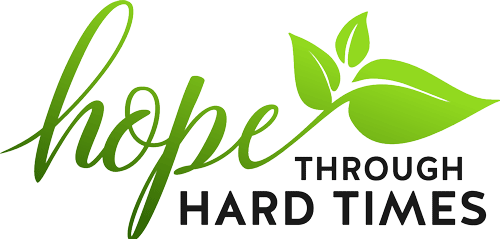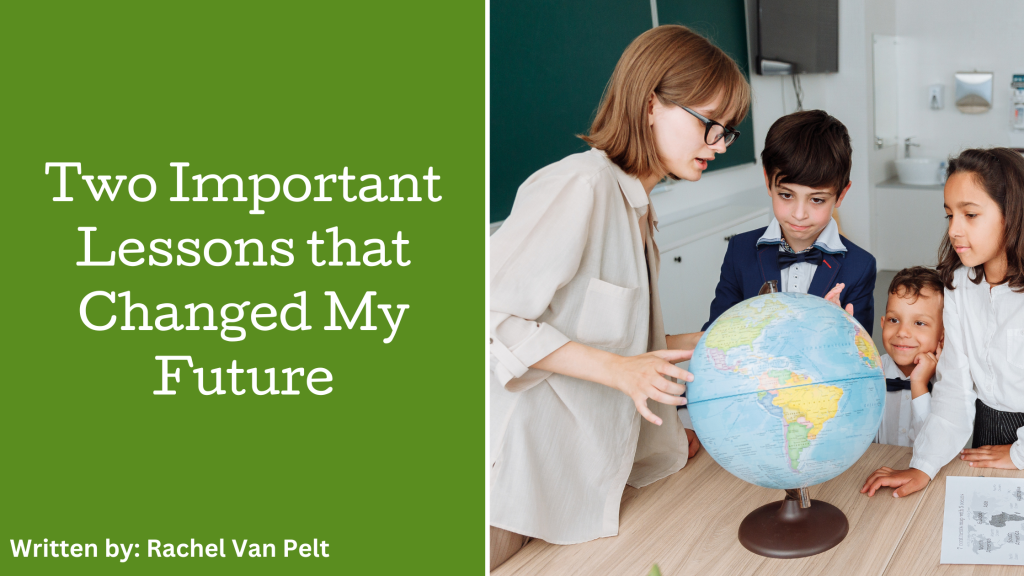I have been going to vision therapy for the past five weeks now. They say that it can take a while before you start to notice changes. Thankfully, after many years of various health problems, I have learned to be in tune with my body. I can tell when slight changes occur.
This proved to be exciting at my fourth visit last week. The therapist was able to make my eyes converge (cross) and diverge (go cock-eyed) easier than the week before. I felt like I could push myself a bit further. I felt something change within my brain. I think it was a growing familiarity to the exercises. This ultimately leads to strengthening of my eyes.
You might be wondering what vision therapy looks like and what it entails. Let me explain to you a couple of the things that I do.
A vision therapist works on many different aspects of your vision in order to strengthen all processing to the brain. This can be reconnecting near to far sight vision. It is natural for most people to look at the speedometer in a car and then up at a sign approaching on the road. My eyes take a bit to adjust when doing that. They will use exercises like the “Brock String” to train my eyes. This exercise has you look close and then slowly or quickly look further away while concentrating on the balls or string.

The therapist also works on my ability to read better. A normal person on average makes 100 eye movements per minute when reading. Someone post-concussion may have up to 400! This is because I often have to look back at a word a few times to be able to understand what I’m reading. I may reread a sentence three or four times to grasp the concept. This causes quicker fatigue. So, the therapist will provide exercises that causes my eyes to jump around to different letters and numbers. This develops better eye movement and concentration.
They also assist to rebuild my peripheral vision. This is where the greatest issues present after a concussion. My peripheral vision is skewed. Most times, people can ignore what is going on around them when they are focused on a task or conversation. I can’t. My brain and eyes register that everything is of equal value. This makes my brain act like I have A.D.D.. If there is movement or noise going on beside or behind me, my brain wants to see what’s happening, regardless how focused I am. Focusing on one object in the middle of a page and then trying to find letters or mark objects around it without looking at them helps strengthen peripheral vision. It is way harder than it sounds though.

As you can see in the picture, I am wearing a patch over one eye. My eyes have been affected differently. My left eye wants to drift when looking at something and my right doesn’t want to move at all. So, in order to work on both eyes as needed, I cover one of them at a time when doing some of the exercises. This is training my eyes to work as they should, and training my brain to take the correct information in from each eye. This will eventually help both eyes to function as they should and work together.
If anyone post-concussion struggles with focusing, reading, watching T.V., and traveling, this therapy is something I would highly recommend! Dr. Quaid, the Neuro-Ophthalmologist that runs the clinic says that at least half of the kids in school with an IEP (Individual Education Plan) could work their way off of it with vision training. Concussions are so common, but we don’t often realize the implications they have on our bodies.
A child that’s had a concussion can show signs of struggling in school, even after it’s looked like they’ve recovered. They may see less focused. Perhaps they are easily angered, are showing signs up behavioural issues, or seem sluggish. These can all be signs that their brains are still affected by the concussion. I would highly recommend pursuing vision therapy for them. It may be expensive, but it’s a life long value worth paying for.
For more information, check out https://www.vuetherapy.ca/.




